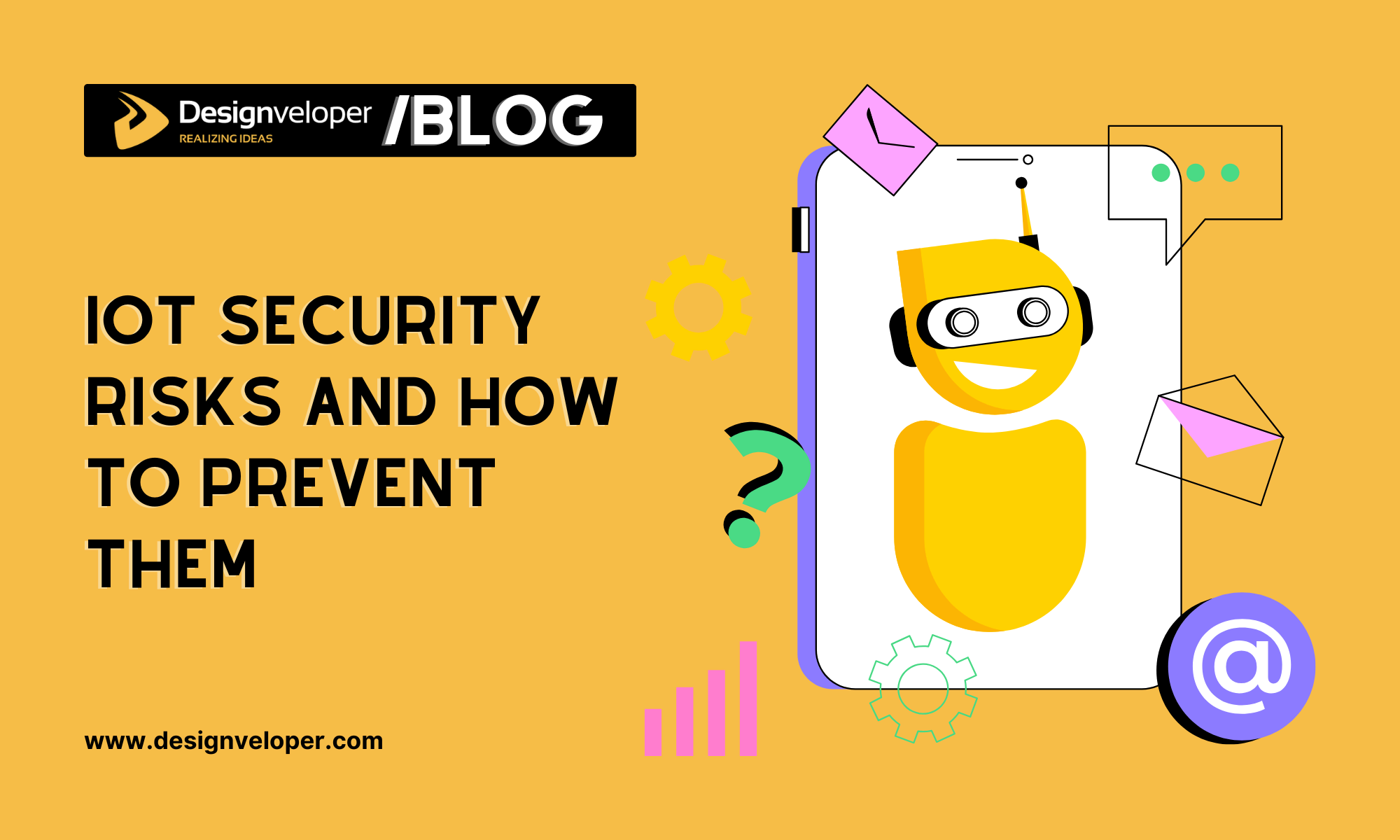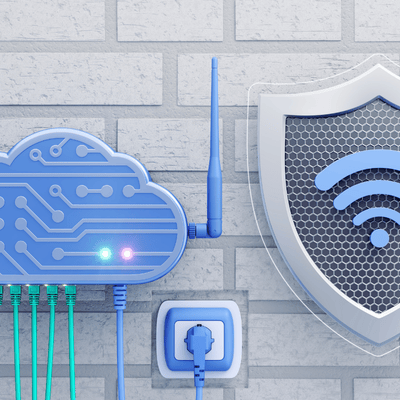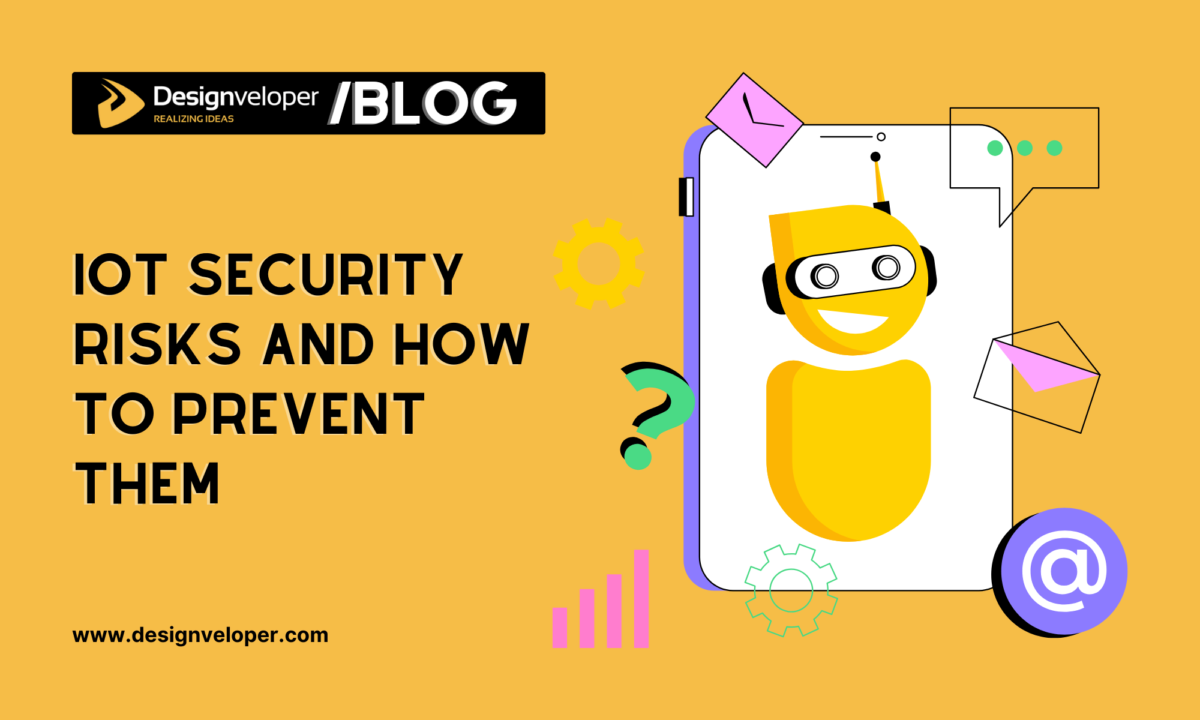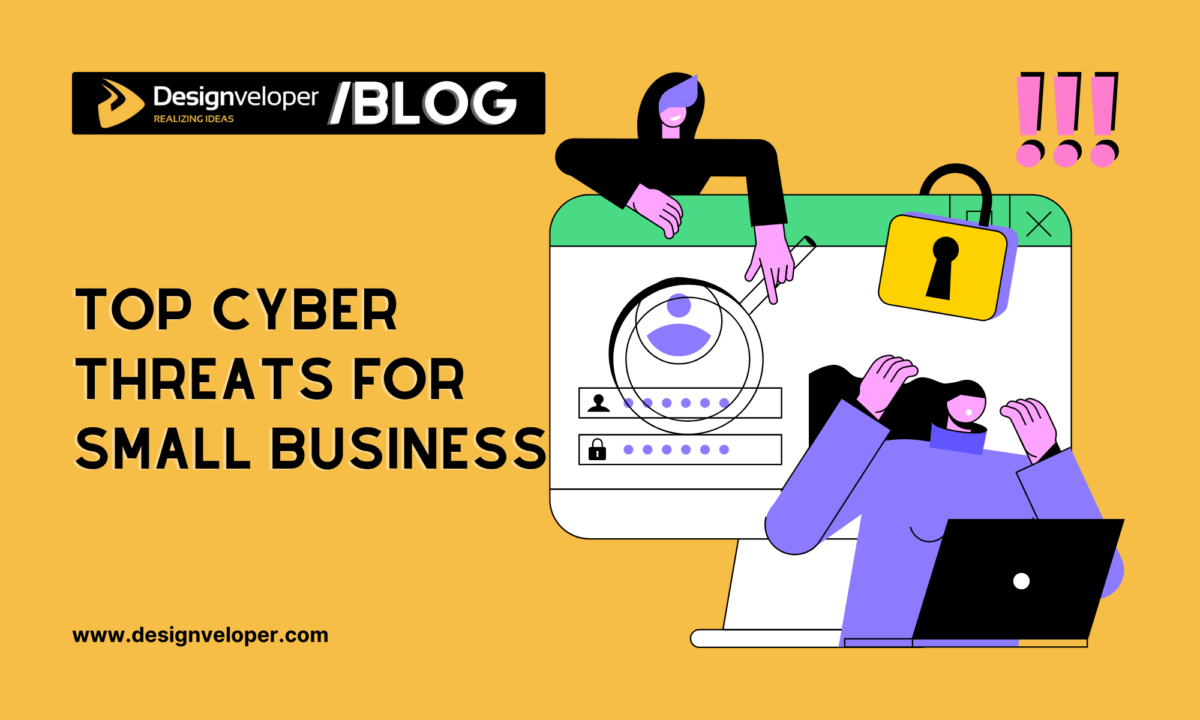
IoT security has become a pressing concern as the number of connected devices continues to grow. Recent studies show that more than 50% of IoT devices are vulnerable to hackers due to critical flaws. As well as this, one third of data breaches include an IoT device. For instance, in November 2024 one of the botnets, dubbed “Matrix”, was able to transform many IoT devices into tools for launching a mass DDoS attack. These incidents highlight the urgent need to address IoT security risks and implement effective preventive measures.
Common IoT Security Risks
The explosion in IoT devices surely brought great problems. According to recent reports, more than 50% of IoT devices have critical vulnerabilities that a hacker can exploit. Consequently, home networks are the victims of an average of 10 attacks a day. Understanding these common IoT security risks is essential for safeguarding personal and organizational data.
Weak or Default Passwords
Most of the IoT devices have default passwords such as ‘admin’ or ‘12345’ and users don’t bother to change it. It also leaves major security breaches because these credentials are very public and cybercriminals can easily exploit them. To give an example, a 2021 study pointed out that the most common password — the password ‘admin’ — was employed close to 21 million times over 45 days.

Legislative actions are countering the risks of default passwords. The United Kingdom, in April 2024, went ahead to pass the Product Security and Telecommunications Infrastructure Act that made selling IoT devices with default passwords illegal. Now manufacturers must issue unique passwords to each device to up the security.
Users should immediately change default credentials upon setting up any IoT device and never use weak or default default passwords to mitigate the risks posed by weak or default passwords. Implementing complex passwords significantly reduces the likelihood of unauthorized access and enhances overall IoT security.
Lack of Regular Firmware Updates
Many of the IoT devices carry outdated firmware making them open to cyberattacks. A report by the IoT Security Foundation revealed that unpatched firmware accounts for 60% of IoT security breaches. For instance, in November 2024, the ‘Matrix’ botnet exploited known vulnerabilities in unpatched IoT devices to create a network cutting across the globe to launch almost massive DDoS attacks.
It is not safe to neglect firmware updates. Attackers can use those compromised devices as entry points into networks. This is another reason why users need to update the firmware of their IoT devices as frequently as possible to minimize the risks. Enabling automatic updates ensures devices receive necessary patches promptly, enhancing overall IoT security.
Unencrypted Data Transmission
Much of the traffic associated with IoT devices is still unencrypted, and so sensitive information is available for interception. Unit 42 and Palo Alto Networks report that about 98% of IoT device traffic is unencrypted, which creates significant cybersecurity risk. In other words, since most traffic is not being encrypted, this makes it possible for attackers to perform Man in the Middle (MitM) attacks, where they can eavesdrop or manipulate data being transferred between devices.
For example, IoT devices such as IoT devices not secured with network protocols such as HTTP, FTP and Telnet which transmit data in plain text on the network. That implies if an assailant gains access to the system; they will have the capacity to divert and decipher the transmitted information, which might result in unapproved access or information breakout. Unencrypted data transmission in IoT devices highlights the immediate necessity of strong encryption protocol implementation to secure sensitive info.
Insecure Network Connections
Insecure network connections present a significant risk to IoT security. A majority of the IoT devices link to the networks which are not clearly secure hence making them prone to data breaches. For example, Forescout has conducted a study and it has shown that the number of IoT vulnerabilities has grown from 14% over the previous year to 33% in 2024 which increases the fear about insecure network connections.
One of the most illustrative examples is a Mirai botnet attack, which took place in 2016 and is an example of one of the largest DDoS attacks in history. This incident underscored the potential consequences of neglecting IoT security.
In order to mitigate these risks, it is important to use strong encryption protocols, update device firmware regularly, and separate IoT devices onto different networks. These measures can significantly enhance IoT security and protect against potential threats.
Over-Permissioned Devices
Many IoT devices request more permissions than necessary, posing significant risks to IoT security. When you give too much permission, there is sensitive data and functionalities accessible to people with no authorization. An example of this would be a study which found that some smart home devices revealed a user’s unique identifier and geolocation information for a user’s home, and how malicious actors could use this information.
To limit these risks, users should carefully review and limit the grants permissions on the IoT devices. Ensuring that devices only have access to essential data and functions is crucial for enhancing IoT security.
FURTHER READING: |
1. Why Web Developers Need a VPN: A Simple Guide |
2. Building User Trust through Secure Software Development |
3. A Complete Guide to Safe and Anonymous Web Hosting |
How to Prevent IoT Security Risks
With the quick expansion of IoT companies, cyber threats targeting those connected systems have been increasing. According to recent reports, home network devices get 10 attacks every 24 hours, which explains the need for serious security measures on home networks. In addition, over 50 per cent of the IoT devices have critical vulnerabilities. Addressing these challenges requires a proactive approach to IoT security, encompassing strategies such as regular firmware updates, strong authentication protocols, and network segmentation. Adopting these measures will greatly help individuals and organizations to reduce the risk of unauthorized access and data breach in their IoT ecosystems.
Use Strong, Unique Passwords
Weak or default passwords significantly compromise IoT security. In fact, a 2024 IBM report showed that only 14% of routers had swapped out the default password, while more than 50%, were still working off factory settings. A study also found that the password has a usage of an 21 million times in a 45-day period in 2021. The statistics point to this routine neglect in changing unattended credentials, making devices easy prey to unwanted admittance.
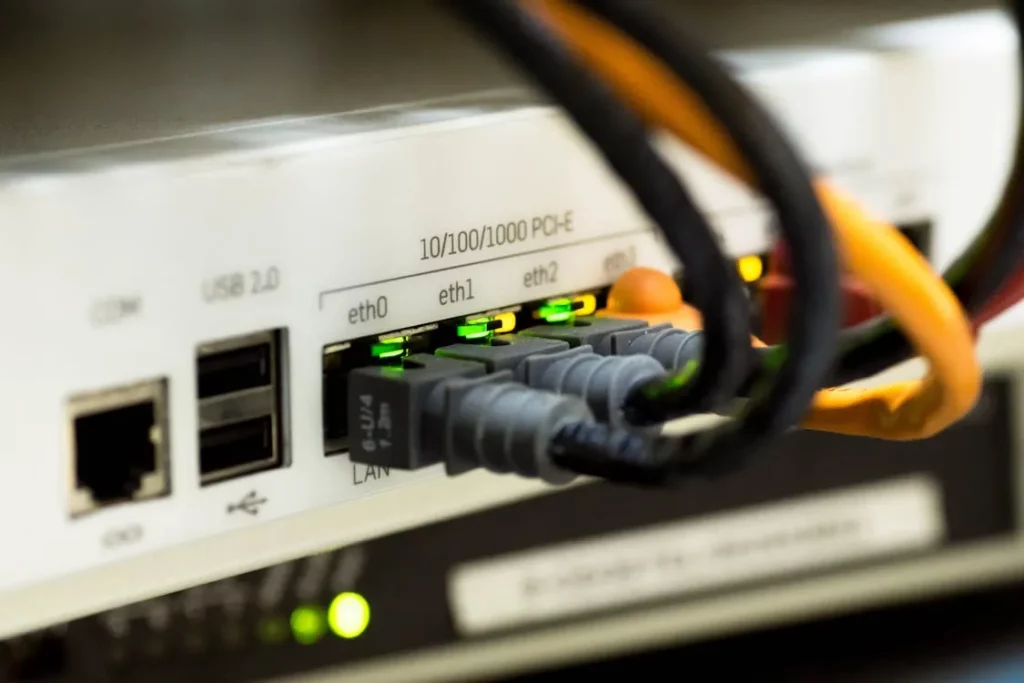
Dangers of weak passwords are very much evident even in the Mirai botnet attack of 2016 where it continuously crashed domain name servers using weak default credentials. IoT devices were infected by attackers using default credentials used to create a massive cascade of Distributed Denial of Service (DDoS) attacks shutting down big websites. This incident underscores the critical need for strong, unique passwords in IoT security.
To enhance IoT security, users should replace default passwords with complex, unique ones for each device. The password should be strong enough, mixed with both uppercase, lowercase letters, numbers and special characters. Using a trustworthy password manager can help you produce and safely save these credentials. Implementing this practice significantly reduces the risk of unauthorized access and strengthens overall IoT security.
Enable Automatic Firmware Updates
Outdated firmware is a leading cause of IoT security vulnerabilities. According to the IoT Security Foundation, 60% of IoT breaches occur due to devices operating with outdated firmware. As firmware updates come with firmer security, better device performance, more features, regular firmware updates are critical.
For example, in 2016, Mirai botnet exploited vulnerabilities in IoT devices with outdated firmware and performed DDoS attacks all around the world. This incident underscores the critical need for timely firmware updates to maintain robust IoT security.
Enabling automatic firmware updates gives devices the patches at the right time to decrease the chance of exploitation. Automated updates streamline the process, minimizing the likelihood of human error and ensuring consistent device protection.
To enhance IoT security, users should:
- Verify if their IoT devices support automatic firmware updates.
- Enable this feature to ensure timely application of security patches.
- Regularly check for and apply updates on devices without automatic update capabilities.
Implementing these practices significantly reduces the risk of unauthorized access and strengthens overall IoT security.
Set Up a Segmented Network for IoT Devices
Due to increased proliferation of IoT devices, network security has become more and more complex. The need for proper security measures to safeguard sensitive data and critical systems is visible in this surge.
Network segmentation involves splitting a network into smaller, separated sections which allow for good control and limitations of traffic flow between devices. Here we can implement this strategy for IoT devices with a set of key benefits:
- Enhanced Security: Network segmentation helps to enhance security of IoT devices by isolating them from the core business systems, which can inhibit access to sensitive information in the event that a device is compromised.
- Improved Performance: Segmentation reduces network congestion by confining the traffic to certain segments that improve the performance of the whole network in terms of reliability.
- Simplified Monitoring: Devices are grouped individually and with easier monitoring of network activity, it is easier to spot anomalies and act on possible attacks.
For instance, in an industry scenario, we separate IoT devices which manage the manufacturing processes from the ones that look after administration, in such a way that a breach in one part of the network wouldn’t touch any other segment.
Steps for Implementation
One can take these steps to implement network segmentation for IoT relevant devices:
- Inventory Devices: Note all the IoT devices connected to the network and their roles and communication requirements, count them as Inventory Devices.
- Define Segments: Group together devices with similar functions or security levels. For example, make environmental sensors, security cameras, and administrative devices as independent segments.
- Configure Firewalls and Access Controls: Put in place very tight controls on access and firewall rules to limit and shape the allowable communications between segments.
- Regularly Update and Monitor: Segmented networks need to be constantly checked for strange activity, and security protocols need to be updated as and when required in order to address new threats.
Implementing network segmentation as part of an IoT security strategy significantly reduces the risk of unauthorized access and enhances the overall resilience of the network.
FURTHER READING: |
1. IoT App Development Costs: What You Need to Know in 2025 |
2. Why Machine Learning in IoT is the Future |
3. Top 10 Japan IoT App Development Companies of 2025 |
Conclusion
Protecting against IoT security threats is crucial in today’s interconnected world. In recent reports, there are some alarming statistics to be found: on average, 10 attacks per day per home network device, and every day, smart home security solutions are blocking more than 2.5 million threats. Of note, Roku was hacked in 2024 when over 576,000 accounts were compromised, underlining the vulnerability of IoT devices.
To minimize these threats, it is necessary that organisations put in place strong measures of securing these risks such as device authentication, data encryption and constant network monitoring. Adopting comprehensive IoT security solutions is essential to protect sensitive information and maintain system integrity.
At Designveloper, we understand the complexities of IoT security. We have an experienced team in developing secure web and software solutions according to your needs. When you partner with us, you can be sure your IoT systems are secure even in the face of advancing cyber threats, thus keeping your data and user trust intact.






Read more topics




























